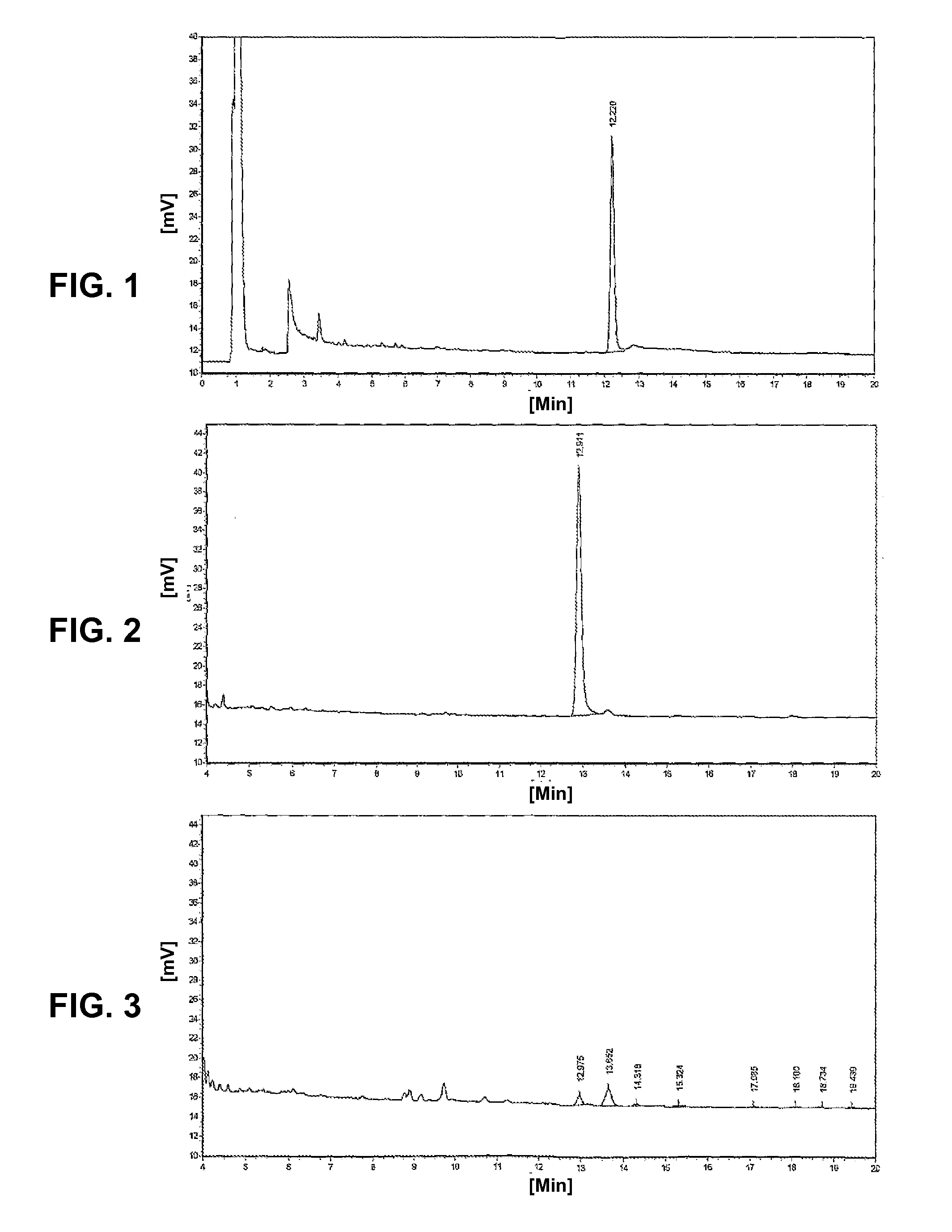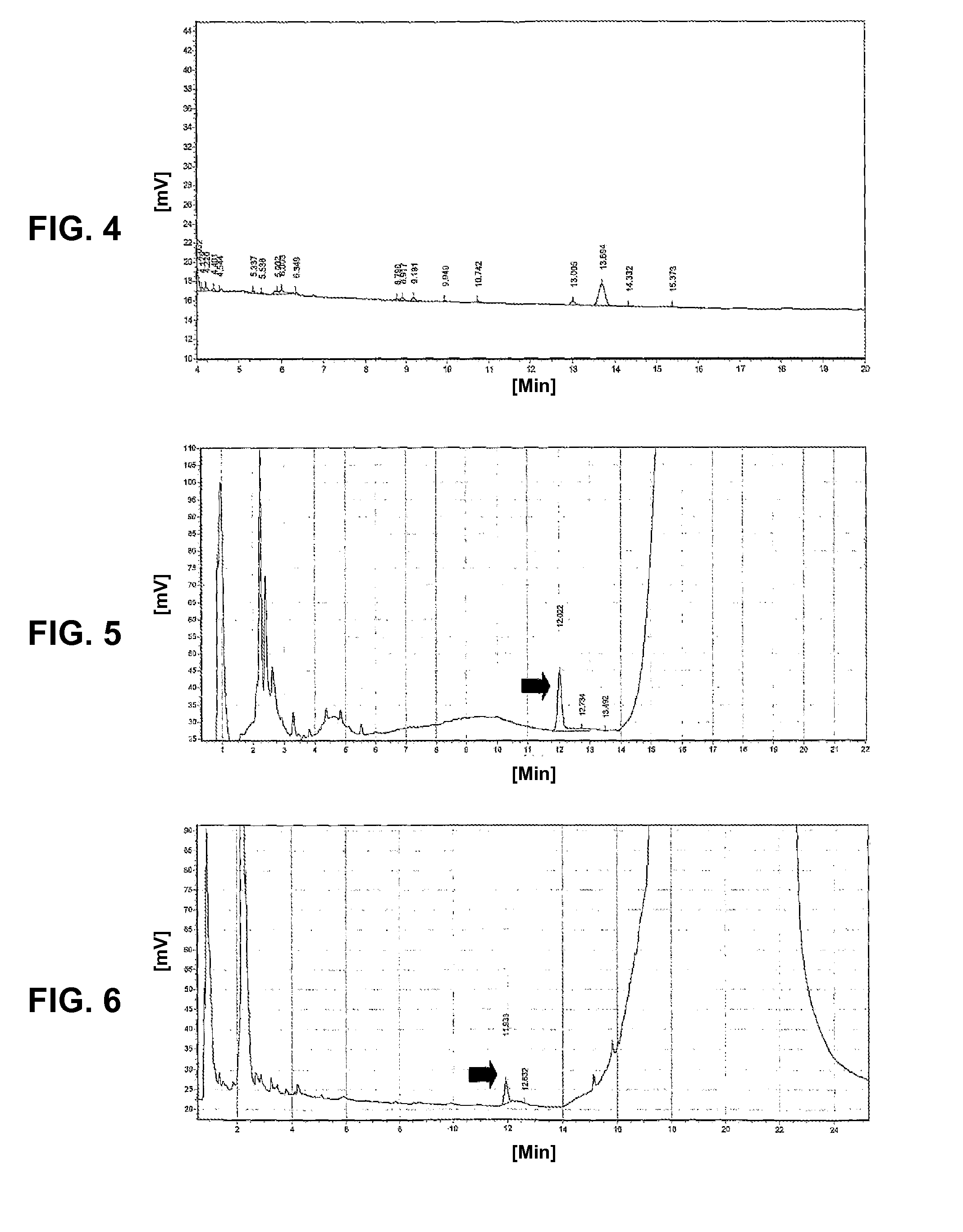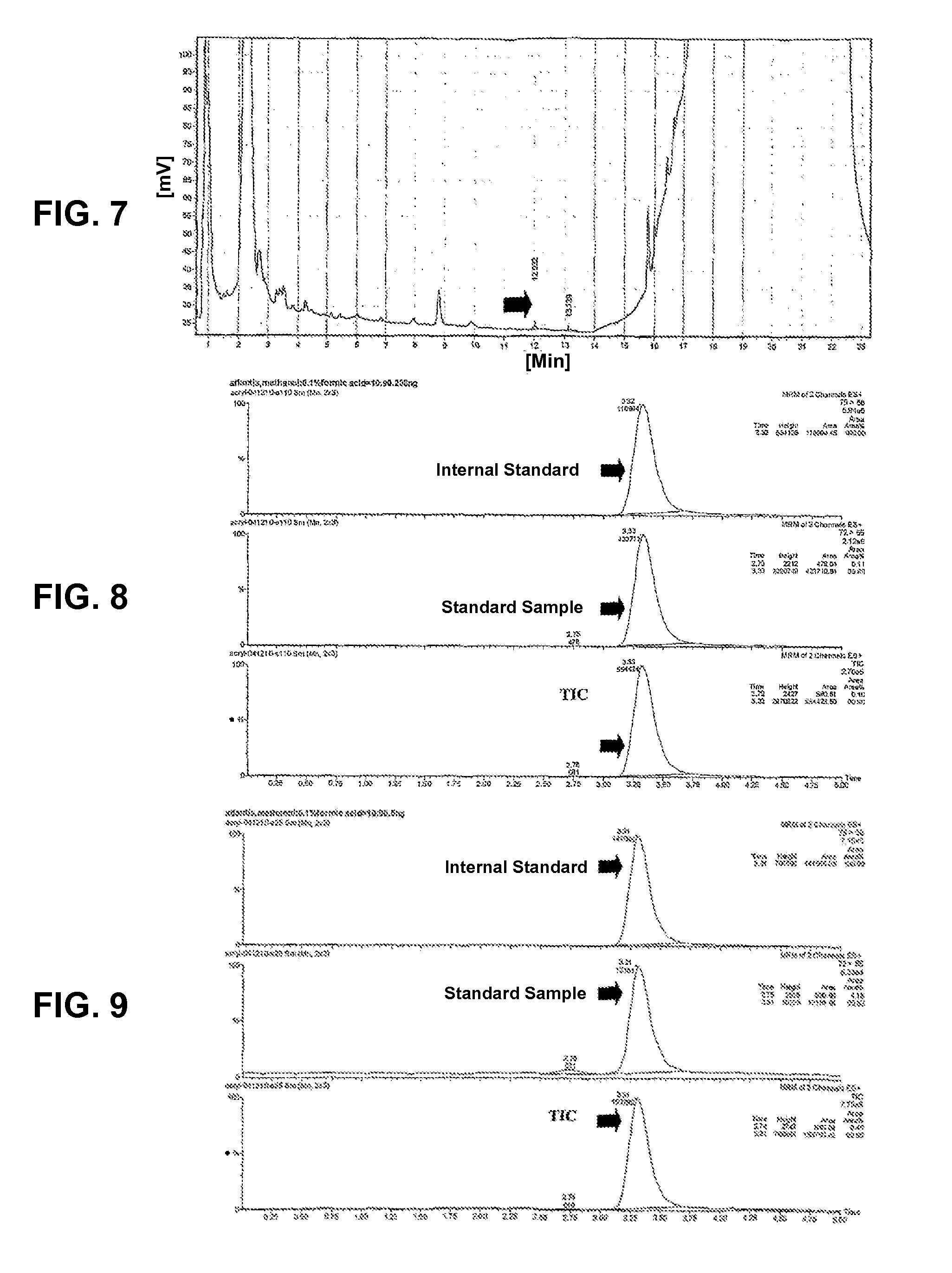Method for using bamboo leaf extract as acrylamide inhibitor for heat processing food
a technology of acrylamide inhibitor and bamboo leaf extract, which is applied in the field of bamboo leaf extract, can solve the problems of chemical hazardous compounds, inducing cancer, and troublesome problems, and achieve the effect of inhibiting the formation of acrylamid
- Summary
- Abstract
- Description
- Claims
- Application Information
AI Technical Summary
Benefits of technology
Problems solved by technology
Method used
Image
Examples
example 1
The Inhibition Effect of Bamboo-Leaf-Extract on Acrylamide in Simulated Reaction System
[0094]10 mL L-Asparagine (0.1 mol / L) and 10 mL D-glucose (0.1 mol / L) were put into a 100 mL bottle and mixed. The mixture was used as a blank control group. To the blank control group the bamboo-leaf-extract was added to afford two test groups containing 10 mg / kg bamboo-leaf-extract (test group 1) and 150 mg / kg bamboo-leaf-extract (test group 2), respectively. The blank control group, test groups 1 and 2 were heated in a 120° C. water bath respectively for 15 min. The resulting reaction solution was derivatized and then analyzed by GC.
[0095]The specific derivatization process was conducted as follows:
[0096]20 μL sample of each of the blank control group, test groups 1 and 2 was added into three 20 mL colorimetric tubes respectively, followed by 0.6 mL 10% (v / v) H2SO4 and water up to 10 mL. The tubes were precooled in 4° C. refrigerator for 20 min and 1.5 g KBr powder was then dissolved in each of ...
example 2
The Dose-Dependent Inhibition of Bamboo-Leaf-Extract to Acrylamide Formed in Above Simulated Reaction Systems
[0100]In order to investigate the optimum dose range of AOB to inhibit acrylamide formation in heat-processing foods, four AOB dose levels were set up in the simulated systems. The AOB sample used herein was the same as in example 1 and the procedure was also similar to example 1. The results were listed in table 2. The content of acrylamide was determined by GC.
TABLE 2The dose-dependent inhibition rate of AOB to acrylamineformed in simulated reaction systems (n = 6)AOB doseAcrylamide contentgroups(mg / kg)(μg / kg)Inhibition rate (%)Blank control05977.19 ± 425.430Test group0.0014870.30 ± 221.2818.5 ± 3.10.0033884.90 ± 185.4035.0 ± 2.90.0071735.46 ± 76.55 71.0 ± 4.80.009544.95 ± 33.7090.9 ± 4.0
[0101]The results showed that when the amount of AOB was added in the range of 1-9 mg / kg in above simulated systems, there was a linear inhibition effect on acrylamide.
example 3
The Inhibition Effect of Bamboo-Leaf-Extract on Acrylamide Formed by Frying Potato Chips
(1) Potato Chips
[0102]Fresh potatoes were washed, peeled off and cut into slices of approximately 1 mm thickness. Then, the cut potatoes slices were selected and rinsed with water twice before drying with tissue.
(2) Plant Extracts
[0103]Bamboo-leaf-extract: a product of Zhejiang University (Hangzhou) Leaf Bio-Technology Co., Ltd. (the product code is EOB-C01) which had a total flavonoid content of 40.7%, and a total phenol content of 79.8%.
[0104]Tea extract: a water soluble polyphenol preparation provided by Department of Tea Science, Zhejiang University (total content: 98%).
(3) Test Groups
[0105]This test consists of three groups, i.e., blank control group A (potatoes slices was not treated with any solutions), group B containing bamboo-leaf-extract (potato slices was soaked in bamboo-leaf-extract solution) and group C containing tea extract (potato slices was soaked in tea extract solution).
[0106...
PUM
 Login to View More
Login to View More Abstract
Description
Claims
Application Information
 Login to View More
Login to View More - R&D
- Intellectual Property
- Life Sciences
- Materials
- Tech Scout
- Unparalleled Data Quality
- Higher Quality Content
- 60% Fewer Hallucinations
Browse by: Latest US Patents, China's latest patents, Technical Efficacy Thesaurus, Application Domain, Technology Topic, Popular Technical Reports.
© 2025 PatSnap. All rights reserved.Legal|Privacy policy|Modern Slavery Act Transparency Statement|Sitemap|About US| Contact US: help@patsnap.com



